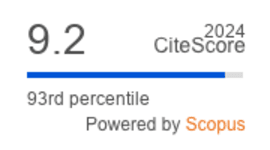Bioactivity of Walnut: Investigating the Triterpenoid Saponin Extracts of Juglans regia Kernels for Antioxidant, Anti-diabetic, and Antimicrobial Properties
DOI:
https://doi.org/10.36877/pmmb.a0000325Abstract
The increasing demand for plant-based medicines makes plant research attractive to find natural alternatives that can replace synthetic products or at least reduce their use. Saponins are a group of natural phytochemical compounds in most herbs, vegetables, and legumes. There are two different types of saponin compounds, which can be classified based on the nature of the aglycone bound to the oligosaccharide fragments, whether it is a steroid or triterpenoid. This paper is devoted to saponins with triterpenoid aglycone and aims to study the relationship between their content and several biological activities in different Juglans regia kernel extracts, including antioxidant, antimicrobial and antibacterial activities. Antioxidant activity was assessed against two free radicals: DPPH and ABTS. Oleanolic acid was used as a standard to quantify triterpenoid saponins, measured by the vanillin method, whereas Acarbose and Tetracycline were used as positive controls to evaluate the α-glucosidase inhibitory and antimicrobial activities, respectively, of walnut kernel extracts. Findings show that hydroalcoholic extract (EtOH 70%) has a considerable content of phenolic compounds, with 59.51 ± 0.26 mg GAE/g in total polyphenol contents, while the content of total flavonoids and condensed tannins were 3.14 ± 0.27 mg QE/g and 85.65 ± 0.37 mg CE/g of crude extract, respectively. In terms of antioxidant activity, the butanolic extract proved to be the most effective against DPPH with IC50 = 7.74 ± 1.49 µg/mL, while the precipitated extract showed the highest scavenging activity against the ABTS free radical with IC50 = 33.14 ± 2.96 µg/mL. In addition, butanolic and hydroalcoholic extracts of Juglans regia kernels showed an α-glucosidase inhibitory activity even more efficiently than synthetic drugs such as Acarbose, with IC50 values of 11.66 µg/mL and 16.17 µg/mL, respectively, versus 18.01 µg/mL in Acarbose. The evaluation of the antimicrobial activity against Bacillus subtilis, Escherichia coli and Klebsiella pneumonia strains revealed that some extracts could inhibit these bacteria. This study successfully assessed the bioactivities of the extracts, suggesting that the extracts of medicinal plants can demonstrate stronger bioactivity than pure synthetic compounds.
Downloads
Published
How to Cite
Issue
Section
License
Copyright (c) 2023 Youssef Elouafy, Salma Mortada, Adil El Yadini, Mohamed Hnini, Youssra Aalilou, Hicham Harhar, Asaad Khalid, Ashraf N. Abdalla, Abdelhakim Bouyahya, My El Abbes Faouzi, Mohamed Tabyaoui

This work is licensed under a Creative Commons Attribution-NonCommercial 4.0 International License.
Author(s) shall retain the copyright of their work and grant the Journal/Publisher right for the first publication with the work simultaneously licensed under:
Creative Commons Attribution-NonCommercial 4.0 International (CC BY-NC 4.0). This license allows for the copying, distribution and transmission of the work, provided the correct attribution of the original creator is stated. Adaptation and remixing are also permitted.

This broad license intends to facilitate free access to, as well as the unrestricted reuse of, original works of all types for non-commercial purposes.
The author(s) permits HH Publisher to publish this article that has not been submitted elsewhere.



.png)

.jpg)
